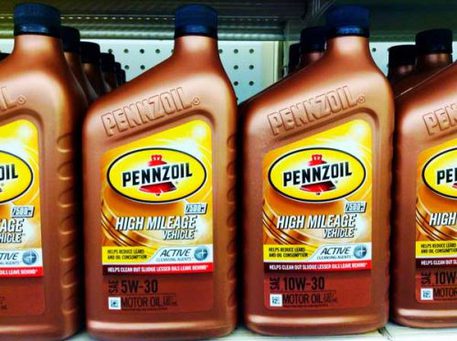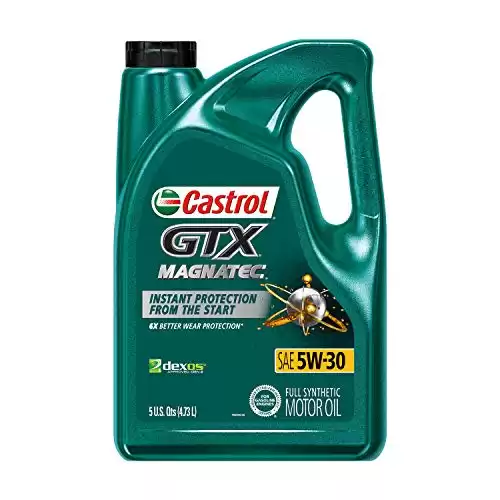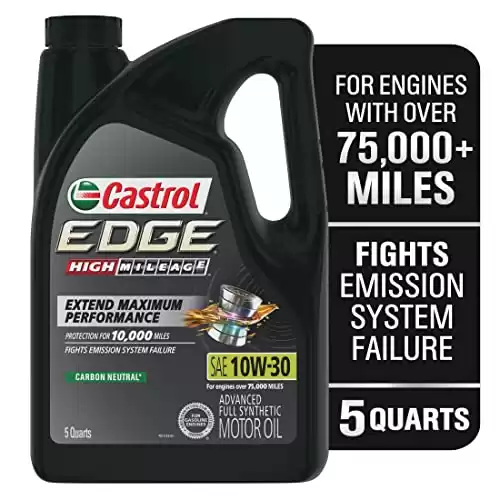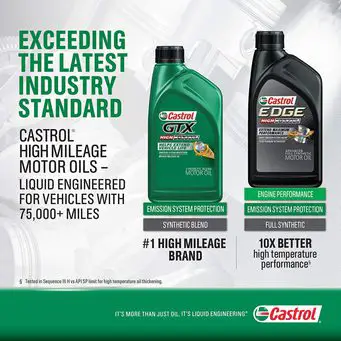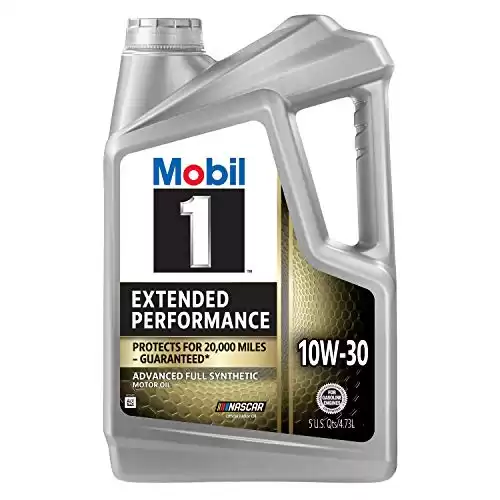There is more than one difference that makes this type of oil stand out to be the most convenient oil used in an automobile, in this case, there are two, and we are going to understand their features, uses, and also their importance.
First of all, we have the 5w30, which is a part of the engine oil. It’s formulated to suit a wide range of petrol engines. The 5w30 is mostly used in passenger cars and small to medium commercial vehicles.
Then, we also have 5w30, which stands for winter hence the lower the number, the lower the viscosity. 10w30 has a higher velocity than the 5w30 oil.
When using 5w30, it has thinner oil since it is lighter while 10w30 is thicker since it has heavier viscosity properties.
5w30 also increases the car performance by providing superior oil strength for engines that work harder due to higher engine pressures whereas 10w30 means that the oil must conform to stringent test parameters performed at low and high temperatures.
With 5w30, oil flows better upon startup compared to 10w30 because of the lighter viscosity since it weighs less than 10W30.
The 10W30 oil flows badly because of the heavy viscosity. However, 5w30 is not stable because it is lighter during hotter climates while 10W30 is heavier thus a better performer in hot conditions.
In this case, 5w30 tends to ignite quickly because it has thinner oil.
5w30 vs 10w30: Which is The Best?
Features & Benefits of 5w30 Oil
They have the most Intelligent Molecules that can:
- It has the ability to stick to vital engine parts when the oil drains downwards.
- Manage to stick into your engine hence forming an extra layer that protects it during start-up and even beyond.
- Bond to the metal on the surfaces that make engine parts more resistant to rust or wear.
- Combine with synthetic technology that provides protection in high and low temperatures.
- Also provides continuous protection of all driving conditions, driving styles, and the temperature.
- Form a self-healing of layers that protect each of the most critical stages and the problem of stop-start driving.
- 100% proven to reduce wear in stop-start operation.
5W30 Viscosity and Wear
In conclusion to 5w30 oil, it has thinner oil hence it ensures a quick start in the lower temperatures while 10w30 is thicker thus the sealing capability helps to protect engines that are old.
It is majorly recommended to be used only by the manufactures specified engine oil for your car.
The oil plays as a part in many synthetic engines that have molecules that are the most intelligent and will protect your vehicle’s engine. Every time you fire up the engine, it will dramatically reduce the wear in stop-start operations.
It is the most suitable oil for automotive in both diesel and petrol engines. That’s why the manufacturers recommended earlier specifications of the 10w-30 lubricant.
Features & Benefits of the 10W30
They have magnate’s Intelligent Molecules that can help mostly:
- When the engine oil drains down, it will cling to the important engine components.
- It has a self-healing formation that will protect every critical stage of stop-start driving.
- This oil is proven to minimize the wear occurred in stop-start operations.
- It’s suitable for vehicles without DPF technology like SUVs, LCVs, petrol, or diesel cars.
10W30 Viscosity and Wear
Their distinction likewise is because of their higher consistency oil, for example, 10w30 will stream slower at lower temperatures with a lower thickness oil like 5w30.
This essential thickness changes as the temperatures change, while its consistency diminishes as the temperature of the oil also increments.
For this situation, a higher consistency or thicker oil will seal superior to any low thickness oil. Thicker oil will likewise give better oil of some basic motor parts.
This oil likewise assumes a vital part in eco-friendliness. High thickness oils, as 10w30, are thicker which makes more delay to the motor parts and lessens motor execution. This extra opposition caused by the oil can build fuel utilization and lessen eco-friendliness.
Fundamentally, slenderer oils have fewer hauls. Along these lines, the less grinding and generally wear in the test motor or motors experience typical tasks.
In any case, to some degree, thicker oils may offer more assurance for more extreme activities, for example, driving through mountains, pulling a pontoon, dusty conditions, short outings, high rpm, over-burdening, overheating, and overcooling.
Temperature affects consistency and film thickness. As a perspective, one SAE review increment in thickness is important to beat the impact of a 20°F increment in motor temperature.
At a given reference point, there is around a 20°F. The distinction between consistencies grades SAE 30, 40, and 50.
SAE 20 is to some degree closer to 30 than alternate hops, in light of the fact that SAE 30 must be 30°F higher than SAE 20 to be generally the identical consistency.
The March to Thinner Oils
- The test oil’s eco-friendliness is contrasted with the eco-friendliness of a reference oil in the Sequence VI-B test. To pass, the test oil must enhance efficiency one to two percent, contingent upon thickness review. SAE 5W-20 must create higher relative eco-friendliness than SAE 5W-30.
- A snappy walk around the oil walkway at your most loved automobile parts store can be overpowering.
- There are actually more than 100 distinct alternatives to look over. The most two widely recognized oils you’ll experience are 5w30 and 10w30.
- Most autos and trucks out and about today uses both 5w30 and 10w30 which are multi-review items.
- This implies they are intended to perform at both cool beginning temperatures and typical task temperatures of 210° F without relinquishing execution.
- The main number in the thickness review is the low temperature, winter rating (i.e. 5w and 10w).
- Truth be told, that is the thing that the “W” remains for Winter.
- Multi-review oils are also intended to be thin and in chilly climates your motor gets the assurance it needs while the motor is as yet warming up.
- The second number is the consistency of the product and the review that has the highest temperature rating. Here, the thickness is estimated at 210° F to peak to the ordinary working temperature of a motor.
- When attempting to settle on 5w30 and 10w30, you’ll have to consider the temperatures where you live and the age of your motor.
- The 5w30 oil is intended to work at encompassing temperatures as low as 30 degrees Celsius (- 22 degrees Fahrenheit) – settling on it an incredible decision on the off chance that you live in cool atmospheres. For example; the Northeastern United States and Canada.
- It is additionally an extraordinary decision in the event that you live in warm atmospheres that scope up to 35 degrees Celsius or 95 degrees Fahrenheit.
- When all is said in done, 5w30 is an extraordinary multi-review oil intended to meet the requests of any temperature in both warm and chilly atmospheres.
- 10w30, in any case, has a littler temperature window.
- 5W-30 A5 is a fully engineered motor oil reasonable for use in car gas and diesel motors where the producer suggests an ACEA A5/B5, API SN/CF, ILSAC GF-4, or prior determination 5W30 ointment.
- 10W-30 is appropriate for use in car petroleum and diesel motors where the producer suggests an API SN, ACEA A3/B3, A3/B4, or prior particular 10W-30 grease.
FAQs
1. 10w30 and 5w30, which protects the old engine?
10w30 protects the engines which are old because of their sealing capability.
2. Will 10w30 cause damage to a car whose oil is 5w30?
It won’t cause a problem since one can add a quart until when you can change with the correct 5w30. It is advisable to have the oil changed as soon as the oil passages in the camshafts since are small and may starve since the 10w30 is thick.
3. Can I mix oil 5w30 and 10w30?
There would be no problem since most oils mix well as long as they have the same synthetic since one is topping up, it may not hurt anything.
Final Words
The 5w30 oil has a more noteworthy multi-review oil for use in lower beginning temperatures and in addition to high temperatures. It has a favorable position of eco-friendliness since it makes less delay in the heading and moving motor parts.
Then again, the 10w30 is thicker, and for this, it might give better fixing and upgrade capacity for more seasoned motors.
As motors get more seasoned, this vast majority of this oil upgrades their clearances to enlarge, and they require thicker oil for better assurance.
It is said that a man ought to dependably utilize the motor oil which is determined in the proprietor’s manual.

Myself Erick R. Jackson, I am a Computer Science graduate by law but a passionately enchanted blogger by profession.
A few years back, it all started with my first blog website. It was about to deal and heal with automotive hand tools. Well, it brought me a good audience base for sure, which then dragged me out of my major and got me to sit and write, and be a blogger. Read more

